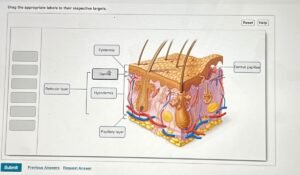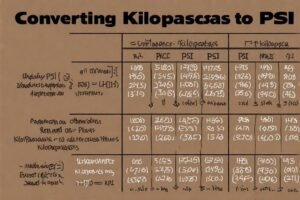
The China Aerospace Science and Technology Corp solar airplane represents a groundbreaking innovation in aviation and renewable energy. This marvel of engineering combines advanced aerospace technology with sustainable practices to redefine flight possibilities. By harnessing solar energy, this cutting-edge aircraft offers a glimpse into a future where aviation is both eco-friendly and efficient.
Table of Contents
The Vision Behind the Solar Airplane
The development of the China Aerospace Science and Technology Corp solar airplane stems from a vision to revolutionize transportation while addressing global environmental challenges. With the increasing demand for clean energy solutions, the corporation has prioritized creating a zero-emission aircraft that can operate continuously without relying on conventional fuel sources. This vision aligns perfectly with global efforts to combat climate change and reduce carbon footprints.
How the Solar Airplane Works
The China Aerospace Science and Technology Corp solar airplane has advanced solar panels covering its wings, converting sunlight into electrical energy. This energy powers electric motors, enabling the aircraft to achieve sustained flight. Excess energy is stored in high-capacity batteries, allowing the aircraft to operate during nighttime or cloudy conditions. This seamless integration of solar power and battery storage is a testament to the corporation’s technological prowess.
Innovations in Solar Energy Storage
The China Aerospace Science and Technology Corp solar airplane continues to push boundaries by developing cutting-edge energy storage solutions. High-capacity batteries ensure uninterrupted operation during low-light conditions, such as nighttime or cloudy weather. These batteries are designed to store surplus energy generated by the aircraft’s solar panels, making them highly efficient and reliable. Recent advancements in battery technology have significantly increased energy density, reducing weight and maximizing flight endurance. This innovation showcases the corporation’s commitment to overcoming the challenges associated with solar-powered aviation.
Advantages of Solar-Powered Aviation
The China Aerospace Science and Technology Corp solar airplane offers numerous advantages over traditional aircraft:
- Zero Emissions: The airplane produces no greenhouse gases, making it an environmentally friendly alternative to fossil-fuel-powered planes.
- Cost Efficiency: Operational costs are significantly reduced by eliminating the need for aviation fuel.
- Endurance: Solar-powered planes have the potential for extended flights, as they are not limited by fuel capacity.
- Noise Reduction: Electric propulsion systems result in quieter operations, minimizing noise pollution.
Applications of the Solar Airplane
The China Aerospace Science and Technology Corp solar airplane has a wide range of applications, including:
- Surveillance and Monitoring: The aircraft can be used for border patrol, disaster monitoring, and environmental surveys due to its ability to stay airborne for long periods.
- Communication Networks: Solar airplanes can serve as high-altitude platforms for internet and communication services in remote areas.
- Scientific Research: The aircraft is ideal for atmospheric studies and climate research.
- Commercial Transportation: As technology advances, solar airplanes become a viable passenger and cargo transportation option.
Challenges and Solutions
Despite its potential, the China Aerospace Science and Technology Corp solar airplane faces challenges:
- Energy Efficiency: Ensuring maximum efficiency in solar energy conversion is crucial. Advances in photovoltaic technology are addressing this issue.
- Weather Dependency: Cloudy or rainy conditions can impact energy collection. High-capacity batteries mitigate this limitation by storing excess power.
- Structural Durability: The lightweight design of solar airplanes can make them susceptible to damage. Innovative materials and engineering techniques enhance durability.
Milestones in Development
The China Aerospace Science and Technology Corp solar airplane has achieved significant milestones:
- Successful test flights have demonstrated its capability to achieve sustained, high-altitude flight.
- Innovations in solar panel technology have increased energy efficiency, enabling longer flight durations.
- Collaboration with global experts has enhanced the aircraft’s design and functionality.
Collaboration with International Partners
The success of the China Aerospace Science and Technology Corp solar airplane is not solely a domestic effort; strategic international collaborations bolster it. The corporation has integrated diverse perspectives into its designs by working with leading aerospace engineers, renewable energy experts, and global institutions. These partnerships have facilitated knowledge exchange, accelerating the development of advanced materials, efficient energy systems, and state-of-the-art avionics. Such international cooperation enhances the airplane’s technological capabilities and underscores its potential as a global solution for sustainable aviation.
Global Impact of Solar Aviation
Introducing the China Aerospace Science and Technology Corp solar airplane is a major step toward a sustainable future. By reducing reliance on fossil fuels, this technology contributes to global efforts to combat climate change. Additionally, its potential to provide communication and surveillance services in underserved regions highlights its humanitarian benefits.
Future Prospects
The China Aerospace Science and Technology Corp solar airplane is paving the way for future advancements in aviation. Researchers are exploring possibilities such as:
- Integrating artificial intelligence for autonomous flight.
- Harnessing the Power of Solar and Beyond: Developing Hybrid Renewable Energy Systems.
- Expanding the aircraft’s capacity for commercial use.
Why China Leads in Solar Aviation
China’s leadership in solar aviation, exemplified by the China Aerospace Science and Technology Corp solar airplane, is driven by several factors:
- Government Support: Strong investment in research and development fosters innovation.
- Technological Expertise: The country’s advanced capabilities in aerospace engineering ensure high-quality designs.
- Commitment to Sustainability: China’s dedication to renewable energy aligns with global environmental goals.
Comparisons to Other Solar Airplanes
While other nations have developed solar airplanes, the China Aerospace Science and Technology Corp solar airplane stands out for its technological sophistication and versatility. Its ability to operate in diverse conditions and perform various functions underscores its superiority in the field.
Conclusion
The China Aerospace Science and Technology Corp solar airplane is a testament to human ingenuity and the pursuit of a sustainable future. By leveraging solar energy, it addresses environmental concerns while offering practical solutions for modern aviation needs. As technology continues to advance, the impact of this innovation will undoubtedly grow, shaping the future of global transportation.
FAQs
1. What is the significance of the China Aerospace Science and Technology Corp solar airplane?
The China Aerospace Science and Technology Corp solar airplane represents a significant advancement in aviation, combining renewable energy with cutting-edge technology to create an eco-friendly and efficient mode of transportation.
2. How does the solar airplane work?
The aircraft uses solar panels to convert sunlight into electrical energy, which powers electric motors. Excess energy is stored in batteries for use at night or in cloudy conditions.
3. What are the main advantages of the solar airplane?
The key benefits include zero emissions, cost efficiency, extended flight endurance, and noise reduction.
4. What challenges does the solar airplane face?
Challenges include energy efficiency, weather dependency, and structural durability.
5. What is the future of the China Aerospace Science and Technology Corp solar airplane?
The future includes integrating AI for autonomous flight, developing hybrid systems, and expanding its use in commercial transportation. This innovation is expected to play a crucial role in shaping sustainable aviation.







